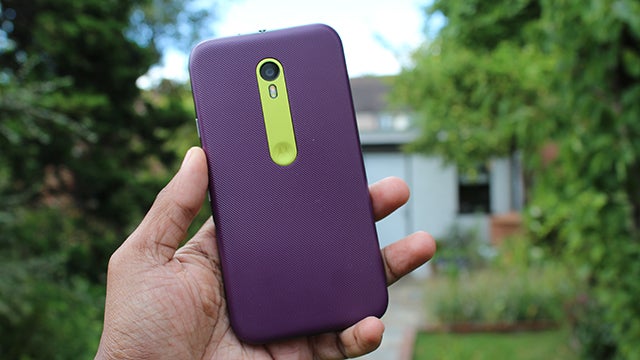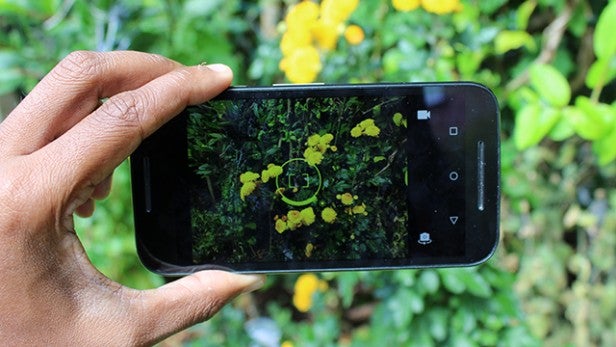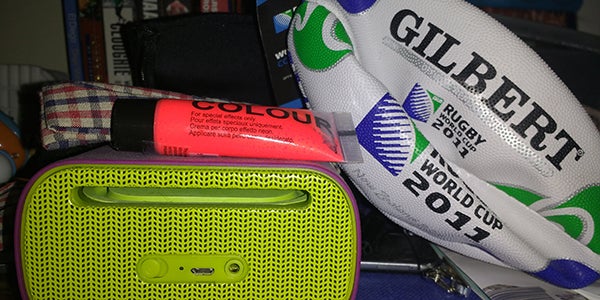Moto G 3 (2015) Review - Camera Review
Camera
It may be more expensive now, but it's still damn good

Sections
- Page 1 Moto G 3 (2015) Review
- Page 2 Software and Performance Review
- Page 3 Camera Review
- Page 4 Battery life, Call and Sound quality and Verdict Review
Moto G (2015) – Camera
Motorola has made a big deal about the camera this year for all of its new phones, something that was arguably the original Moto G’s weakest feature. That improved with last year’s Moto G and it feels like things have been taken to a whole different level for the third-generation phone.
While it can’t compete with the iPhone 6 or the Samsung Galaxy S6 for overall image quality, it’s a big step up and shows how Motorola is trying to squeeze even more into this budget phone.
In the 2015 Moto G you get a 13-megapixel main camera with a generous f/2.0 aperture lens and a dual-tone LED flash – a feature commonly seen on top-end phones. A dual-tone flash doesn’t make for a brighter flash, but it means it can adapt to the ambient conditions to capture more accurate shots with the flash on.
Up front, there’s a 5-megapixel camera with an f/2.2 aperture, wide angle lens to capture more in your selfies.
This is essentially the same setup as the Nexus 6, but at a fraction of the price. On paper, it’s very promising, and the results are promising, too.

The camera app hasn’t been drastically overhauled, adopting the same gesture controls to swipe in the settings menu and the Gallery. There’s no manual controls to speak of here, but that’s hardly surprising considering the cost of the phone.
Instead, you get scene modes like Night Mode, touch to focus options and an HDR mode that does a markedly better job than many more expensive phones.
You can pick from 13-megapixel images in 4:3 or 9.7-megapixel in 16:9. In both cases, this is a speedy camera to take pictures apart from when shooting in HDR mode, where it can take a couple more seconds to capture. You can get some really rewarding results in good light, especially outdoors.
The two photos below are the same shot taken first with the Moto G 2 and then this year’s Moto G. The difference is clear. This year’s model is sharper, more detailed, richer and better exposed. It’s a fundamentally better photo. Moto G 2 photo sample
Moto G 2 photo sample Moto G (2015) photo sample
Moto G (2015) photo sample
 Indoor shots are nicely detailed, though colours aren’t as rich.
Indoor shots are nicely detailed, though colours aren’t as rich.
It takes nice portraits and macro photos, too, though the faster f2.0 aperture means it’s sometimes tricky to ensure the right parts of the shot are in focus – as the shot below shows.
The areas that are in focus are sharp and nicely detailed, and there’s a nice level of colour detail in this shot, too. A little depth-of-field helps isolate the subject, but the fast aperture means the tip of this flower is a little soft.
On the plus side this is great for anyone who likes to be a little creative, but you’ll want to download a camera app that gives you more manual control.

Next you can see the HDR mode is very effective for a budget/mid-range phone. This HDR shot isn’t the sharpest example, but you can see that it doesn’t create annoying halos around objects – as some HDR modes can – and it brings a little more detail to high contrast areas in this shot.
HDR turned off
HDR turned on
Inevitably, like many smartphone cameras, it’s low-light shooting where things get tough. Unlike the Nexus 6, there’s no optical stabilisation here to come to your aid, so images tend to generate a noticeable amount of noise and generally inaccurate colours.
It doesn’t get that much better when you move indoors, although the dual flash does ensure colours are accurate. 
Indoor low-light with flash turned on
When it comes to shooting video, the Moto G offers up to Full HD 1080p video recording at 30fps and 720p HD to shoot slow-motion video. It’s not the best we’ve seen for video, but you can still get some pleasing results, albeit with some noise and audio capture that’s far from crystal clear.
The slow-motion mode isn’t particularly smooth, but works well enough for it to be a feature to have some fun with.
How we test phones
We test every mobile phone we review thoroughly. We use industry standard tests to compare features properly and we use the phone as our main device over the review period. We’ll always tell you what we find and we never, ever, accept money to review a product.


